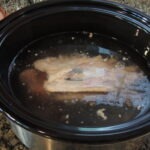You may have noticed that our recipes often call for “white whole wheat flour.” If you’re not familiar with this flour, it’s time to learn about it!
White whole wheat flour is made from a hard white wheat that’s light in color. The flour is ground from the whole grain, but it’s just not as dark as hard red wheat, which is the typical wheat used for flours in the US. White wheat berries have a milder flavor as well. Finally, white whole wheat flour is finely ground, making it ideal for baking cakes, cookies, and quick breads, as well as dusting, breading and thickening foods. This is a versatile whole grain flour, which is why we use it in our finite kitchen.
However, if you really want to do a lot of baking, you should consider adding some additional flours to your pantry, as described below.
Whole wheat pastry flour is finely ground from a soft white wheat, so it works well in… you guessed it, pastries! This includes cakes, biscuits, pie crusts, etc. It can be substituted for white whole wheat flour in our recipes. Soft wheat has less protein than hard wheat, so delicate pastries are more tender and fluffy.
Stone ground whole wheat flour is ground the old-fashioned way with mill stones, or it should be. There’s really no regulation, so it takes a little trust in the manufacturer. Because of the way it’s ground, this flour is typically coarser, with flecks of bran throughout. It works well in artisan bread baking.
White flour (aka wheat flour on some labels) is refined and comes in bleached or unbleached. Either way, it will be lighter in color and texture than any of the whole wheat varieties. It’s nice to have some around to lighten up certain desserts that just don’t work well with 100% whole wheat. We sometimes use it to thicken a Béchamel sauce or other sauces, and it works well for dusting a fish fillet or chicken cutlet, even though whole wheat also works. White flour doesn’t darken sauces or coatings and doesn’t conflict with other flavors, which is why we like to have some around.
As we said, white flour is refined, which means the bran and germ have been stripped away along with most of the nutrients found in wheat. Although some vitamins are added into the finished flour, they only represent a small portion of what was removed. White flour is digested more quickly, raises your blood sugar levels more quickly, and leaves you feeling hungry again more quickly than whole grains. Whole wheat is much more nutritious and desirable from a health perspective.
So, here’s the takeaway. If you like to bake, you can use white whole wheat flour or whole wheat pastry flour (unless you’re baking whole wheat bread, in which case you’ll want to use stone ground or regular whole wheat flour). Keep a small amount of white flour on hand for sauces and to improve the texture of certain baked goods.
Be sure to store whole grain flours in a plastic resealable bag or airtight container, and keep it in the refrigerator or freezer. The oils in whole grains go rancid if stored too long in a warm space like your pantry. Since white flour no longer contains these healthful but fragile oils, you can store it in your pantry at room temperature, but we still suggest keeping it in a ziploc bag or other airtight container to keep bugs out.
Reference: http://wholegrainscouncil.org/whole-grains-101/whole-white-wheat-faq

